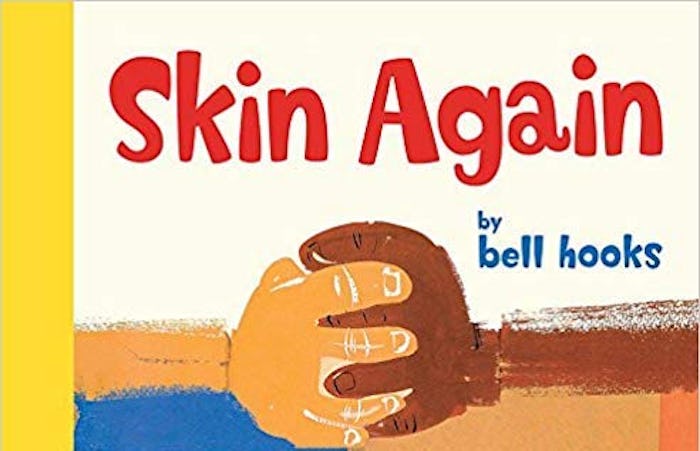Life

The Book That Lets Children Explore More Than One Identity
When bell hooks said “the skin I’m in will always be just a covering. It cannot tell my story,” I felt that.
In 2016, I was featured in a campaign with StyleLikeU and Allure called “Dispelling Beauty Myths” that sought to confront “the one-dimensional standards of beauty that prevent us all from inhabiting our freest and most beautiful selves.” I talked about my personal journey with vitiligo that included, but wasn’t limited to, constant bullying, harassment from strangers, negative body image, low self-esteem, and an unhealthy obsession with makeup. While my relationship to vitiligo is different now, I still struggle with some of those issues but I approach them from a more confident yet detached place that I owe to developing a more healthy relationship with my mind and body in general.
My concerns regarding vitiligo are, now, more about my identity as a Black femme than they are about aesthetic ideas about beauty and attractiveness. When we talk about race and identity in the Black community, we often focus on topics like colorism and intersectionality while also heavily centering on one’s skin tone. It is certainly important to discuss the ways in which proximity to whiteness impact identity, or why Black people with lighter skin and more European features are afforded privileges not available to other Black people. It is also important, though, to bring nuances to conversations about melanin. Diagnoses like vitiligo or albinism result in unique perspectives of the Black lived experience. As the mother of an Afro-Latinx child, I want to ensure that future conversations we have about race, ethnicity, and identity are grounded in an honest telling of histories that capture these nuanced discussions about Blackness and also include truths about how colorism and anti-Blackness impact Latinx communities.
Given that 'we are all inside made up of real history, real dreams, and the stuff of all we hope for,' it can benefit us all to take a deeper look at one another before making judgments or claims.
Paired with the vibrantly colored and minimalist art of Chris Raschka, bell hooks’ thoughtful and loving children’s narrative about skin color and identity offers readers a simple yet meaningful portrayal of a child’s relationship to their melanin. In Skin Again, bell hooks shows us that complex ideas about race and identity can be made accessible to young people without sacrificing transparency and honesty. That’s what makes the book particularly special to me as a Black mom with vitiligo, a skin disorder that results in loss of pigment that is most noticeable on people with darker skin tones, who is raising an Afro-Latinx child.
In Skin Again, bell hooks writes that skin is “just a covering” and that if you really want to know who a person is you have to “open your heart” and “come inside,” reminding us that it’s important to look beyond the surface and get the root of one’s inner self in order to truly know who they are.
While there’s no denying that systemic inequity, global white supremacy, and structural racism have disproportionately and negatively impacted the lives of the Black community, the ways that our lives are impacted vary greatly and shouldn’t be lumped into one-dimensional categories. Further, communities of color around the world must navigate racist institutions while facing implicit biases and discriminatory behaviors of people in positions of power based on on their skin tone. In order to have honest, thoughtful, and meaningful conversations about dismantling oppressive systems, while also promoting healthy dialogue about self-esteem and identity, it’s important to remember that “skin again is one small way to see” who we are “but not real enough” to reveal all of who we are. Given that “we are all inside made up of real history, real dreams, and the stuff of all we hope for,” it can benefit us all to take a deeper look at one another before making judgments or claims. Our skin tones influence the ways we navigate the world but our unique experiences add texture and depth to our identities.
As a scholar, writer, and researcher, my work and teaching philosophy has been heavily-influenced by bell hooks’ work. Teaching to Transgress: Education As the Practice of Freedom helped me unpack what life in academia means to me; Ain’t I a Woman: Black Women and Feminism showed me that dismantling oppressive systems should be the primary task of feminist movements; Reel to Real: Race, Sex and Class at the Movies taught me about the oppositional gaze and gave me a framework within which to better understand my concerns with cinema, and All About Love: New Visions offered insight into the cis-heteronormative framework within which relationships are often constructed.
I’m thankful that Skin Again has provided me with a perfect literary point of departure to address issues related to race and identity with my child, once they’re old enough to engage. Until then, it’s a great book for storytime that they love because beneath its cover it’s poetic, melodic, lived-in.